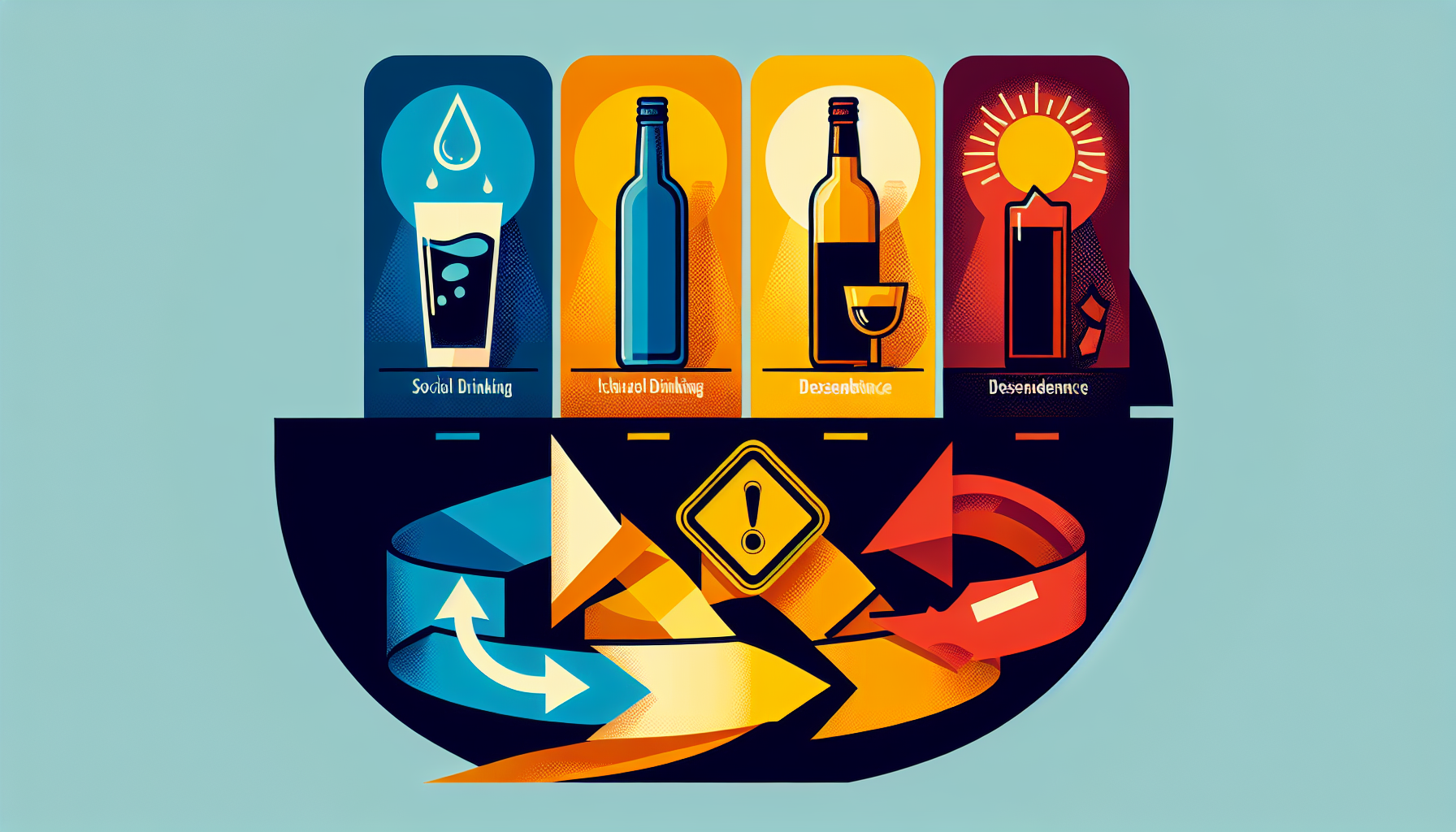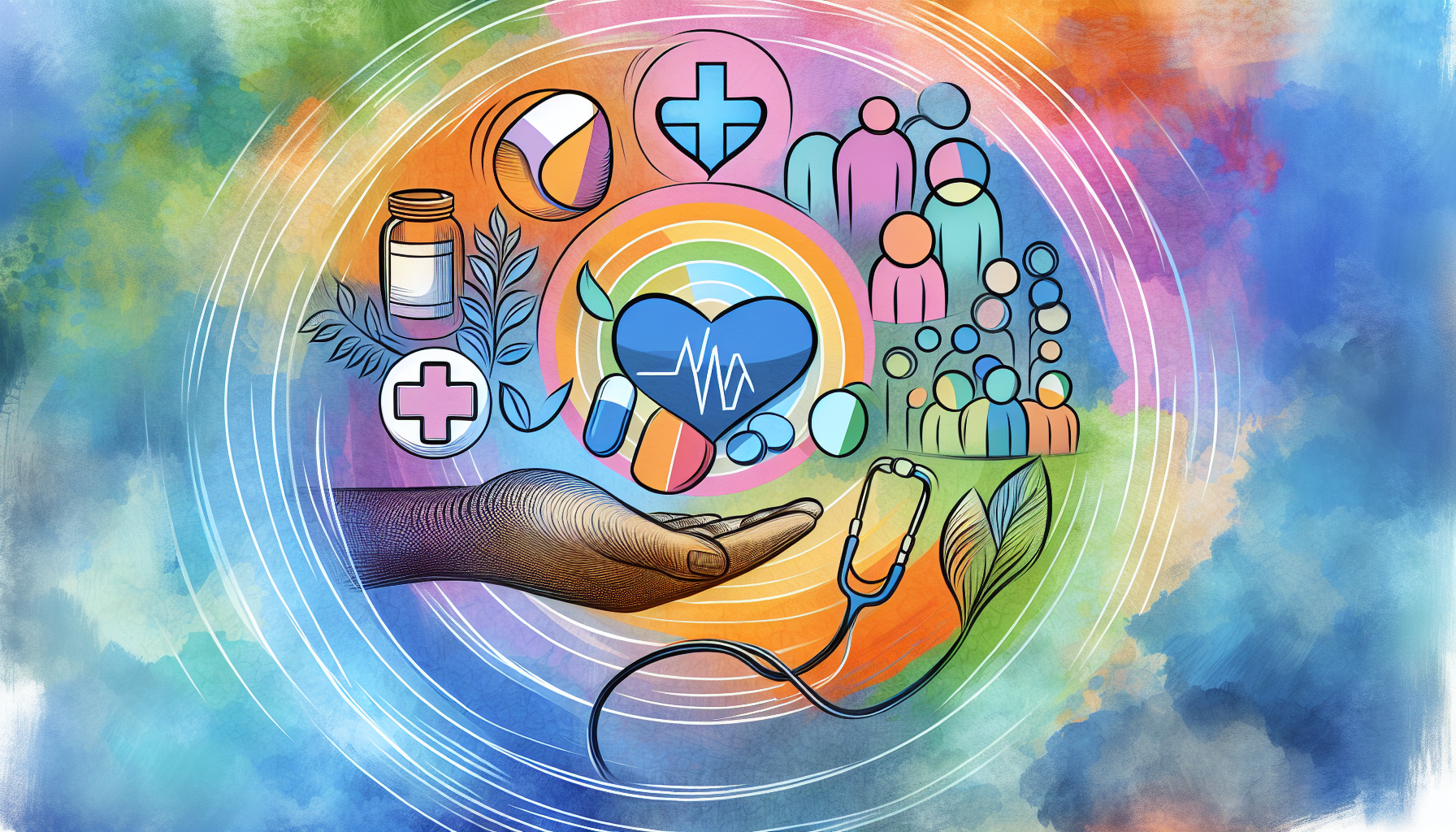Understanding the Stages of Alcoholism: Symptoms & Treatment Options
- Andrew Collett
- Aug 23
- 10 min read
Updated: Sep 1
Alcoholism unfolds in identifiable stages, each with clear symptoms. Knowing the stages of alcoholism helps in early recognition and intervention. This article explains these stages, their symptoms, and possible treatments.
Key Takeaways
Alcoholism is a chronic disease characterized by the inability to control drinking despite negative consequences, with significant impacts on decision-making and brain function.
The progression of alcoholism occurs in four stages, each marked by distinct symptoms that can help identify the severity of alcohol dependency and inform appropriate treatment.
Timely intervention and ongoing support are crucial for recovery; various treatment options include early intervention strategies, medical detox, rehabilitation programs, and long-term support systems.
Understanding the stages of alcoholism enables individuals and their loved ones to make informed decisions about when and how to seek help and treatment.
Defining Alcoholism

Alcoholism, or alcohol use disorder, is a chronic disease that involves the inability to control alcohol consumption despite the negative consequences it brings. The American Medical Association recognized alcoholism as an illness in 1956, underscoring its serious nature and the need for proper treatment. It’s a condition that affects the brain’s ability to make healthy choices, leading to a cycle of obsessive drinking and alcohol dependence.
Alcoholism can be an incredibly challenging disease to overcome without the right support. However, recovery is achievable at any stage. Many individuals find that with the proper treatment and support, they can break free from the grip of alcohol addiction and reclaim their lives. Recovery is a personal and unique journey, beginning with a clear understanding of alcoholism.
The brain’s role in alcoholism is significant, as it affects motivation and decision-making capabilities. Alcoholism develops due to a combination of alcohol related causes, including genetic, behavioral, and environmental factors, which contribute to the onset and progression of the disease. This influence can make it extremely difficult for individuals to stop drinking on their own. Without intervention, the cycle of alcohol use continues, often leading to more severe health and social consequences. Recognizing the disease as a medical condition helps in approaching it with the necessary seriousness and compassion.
Key Statistics and Facts
In 2023, approximately 28.1 million adults in the U.S. experienced alcohol use disorder, highlighting the widespread nature of this condition. Alarmingly, this number extends to 28.9 million individuals aged 12 and older, indicating that alcohol use disorder affects a broad age range and can begin early in life.
Prolonged excessive alcohol consumption is linked to over 60 different health conditions, emphasizing the severe health risks associated with chronic alcohol use. The amount of alcohol consumed directly correlates with increased risks for diseases such as cancer, liver cirrhosis, and various cardiovascular issues, with even moderate alcohol consumption having significant long-term effects on health. These statistics from the National Institute on Alcohol Abuse and Alcoholism (NIAAA) underscore the importance of addressing alcohol use disorder with urgency and informed strategies.
Predictors of Alcohol Use Disorders
Understanding the factors that increase the risk of developing alcohol use disorder is crucial for early intervention and prevention. Research shows that alcohol addiction and alcohol abuse are influenced by a combination of genetic, environmental, and personal factors. One of the strongest predictors is the age at which a person first begins to drink alcohol—those who start drinking at a younger age are at a significantly higher risk of developing alcohol use disorder later in life.
Family history also plays a major role. Individuals with close relatives who have struggled with alcohol addiction are more likely to experience similar challenges themselves. Mental health issues, such as anxiety, depression, or trauma, can further increase the likelihood of alcohol use disorder, as some people may turn to alcohol as a way to cope with negative feelings or stress.
Environmental influences, including peer pressure, exposure to excessive drinking, and stressful life events, can also contribute to the development of alcohol addiction. According to the National Institute on Alcohol Abuse and Alcoholism, about 14.5 million adults in the United States had alcohol use disorder in 2019, highlighting the widespread impact of these risk factors. By recognizing these predictors, individuals and healthcare providers can take proactive steps to address alcohol use early and reduce the risk of addiction.
The Four Stages of Alcoholism

Alcoholism progresses through four distinct stages:
Pre-Alcoholic Stage
Early Stage Alcoholism
Middle Stage Alcoholism
Late Stage Alcoholism
These are based on theoretical stages developed by researchers to help classify and understand the progression of alcoholism.
Each stage is marked by specific behavioral and physical symptoms, reflecting the gradual and escalating nature of alcohol use disorder.
Understanding these stages helps in identifying the level of alcohol dependency and tailoring appropriate interventions.
Pre-Alcoholic Stage
The Pre-Alcoholic Stage is characterized by experimentation with alcohol, where individuals may drink socially or use alcohol to cope with stress and negative emotions. During this stage, drinking habits begin to form, and individuals may start to develop alcohol tolerance, requiring more alcohol to achieve the same effects. Common reasons for drinking at this stage include seeking self-improvement, dulling emotional pain, or alleviating anxiety.
Intervening early at this stage can prevent more severe drinking habits from developing.
Early Stage Alcoholism
Early Stage Alcoholism is marked by an increase in drinking frequency and noticeable changes in drinking behaviors. Binge drinking episodes are common in this stage, often serving as an early warning sign of problematic alcohol use. Individuals may start to drink more regularly and in larger quantities, often to cope with negative situations or feelings. Key signs of early-stage alcoholism include secretive drinking, occasional memory blackouts, and a growing preoccupation with alcohol.
Middle Stage Alcoholism
Middle Stage Alcoholism involves increased frequency and risky use of alcohol, with noticeable behavioral changes and health problems becoming more apparent. Individuals may experience:
Missing work
Becoming irritable
Exhibiting physical signs such as facial redness
Experiencing weight changes
Showing sluggishness
At this stage, individuals are likely to be recognized by others as having a drinking problem, which may prompt concern from family or friends.
Behavioral changes include hiding drinking habits, failing to meet family or work obligations, and neglecting personal hygiene.
Late Stage Alcoholism
Late Stage Alcoholism, also known as end stage alcoholism, is classified as a severe form of alcohol use disorder, characterized by a significant loss of control over alcohol consumption. Individuals in this final stage experience severe dependency on alcohol and face substantial health problems, as well as social and occupational impairments.
In the final stage, individuals often require alcohol just to feel normal and avoid severe withdrawal symptoms. Years of heavy drinking lead to significant organ damage and health complications. Key signs include a relentless need for alcohol to avoid alcohol withdrawal symptoms, severe withdrawal symptoms, and damage to vital organs such as the liver and brain. Itchy skin is also a common symptom resulting from liver damage in this stage.
Recognizing Symptoms at Each Stage
Identifying symptoms at each stage of alcoholism is key for timely intervention. Recognizing the early signs, common signs, and warning signs of alcoholism is crucial, as it allows for prompt action before the condition worsens. Each stage presents specific physical, behavioral, and psychological symptoms that can help in diagnosing the severity of alcohol use disorder. Understanding these symptoms can help individuals and families anticipate the potential consequences of untreated alcohol use disorder.
Physical Symptoms
Physical symptoms and physical problems of alcoholism include rapid weight fluctuations, sleep disturbances, and noticeable skin changes such as redness and bloating. Excessive consumption of alcoholic beverages can lead to significant health issues, particularly affecting organs like the liver and brain, with liver diseases such as cirrhosis and hepatitis being common consequences. Consuming alcoholic beverages increases the risk of developing these physical problems and liver diseases.
Behavioral Symptoms
Behavioral symptoms of alcoholism often include neglecting responsibilities, exhibiting secretive drinking patterns, and experiencing memory blackouts. Individuals may become more secretive about their drinking habits and show frequent physical symptoms like nausea.
Problem drinking behaviors, such as secretive consumption and neglecting responsibilities, often emerge in the early stages of alcoholism and can be warning signs that alcohol misuse is progressing.
In the early stages, reliance on alcohol for stress relief and emotional management is common, especially when individuals choose to drink alcohol.
Psychological Symptoms
Psychological symptoms of alcoholism include impaired memory, cognitive functions, increased anxiety and depression, and mental problems. Chronic alcohol consumption can exacerbate mental health issues, making it difficult for individuals to manage their emotions and daily responsibilities. Long-term alcohol use can also result in brain damage, leading to cognitive decline, dementia, and other serious neurological issues.
Treatment Options for Alcoholism

Several treatment options are available for individuals struggling with alcohol use disorder. Access to human services, such as healthcare and social support, is essential for managing the long-term effects of alcohol use disorder. These include early intervention strategies, medical detox and rehabilitation, and long-term recovery support.
Early Intervention Strategies
Early recognition of alcoholism symptoms can result in timely intervention and improved recovery outcomes. Professional help is essential for early-stage alcoholism. Treatment options usually involve behavioral therapies and support groups.
Timely intervention can significantly change the trajectory of alcohol dependency. Establishing healthy boundaries is also an important part of early intervention, helping both individuals and their loved ones manage the challenges of recovery.
Medical Detox and Rehabilitation
Medical detoxification is a critical step for managing withdrawal symptoms and reducing the risk of complications such as delirium tremens. Rehabilitation programs, both inpatient and outpatient, offer structured support for recovery.
Medications like disulfiram or naltrexone can help reduce cravings and support sobriety.
Long-Term Recovery Support
Ongoing support is essential for maintaining sobriety and preventing relapse. Counseling, peer support, and participation in structured support groups like Alcoholics Anonymous are essential.
Maintaining long-term recovery requires ongoing engagement with support systems to sustain a healthy, alcohol-free lifestyle.
Overcoming Obstacles in Recovery
The journey to recovery from alcohol addiction is often filled with challenges, but overcoming these obstacles is possible with the right support and resources. One of the most significant hurdles is managing withdrawal symptoms, which can range from mild discomfort to severe and potentially life-threatening reactions. Medical supervision and medications, such as benzodiazepines or anti-seizure drugs, can help ease these symptoms and make the detox process safer.
Beyond the physical challenges, addressing the emotional and psychological aspects of addiction is essential. Many individuals in recovery face underlying mental health issues, past trauma, or strained relationships that may have contributed to their alcohol use. Counseling and therapy provide a safe space to work through these issues, develop healthier coping strategies, and build resilience.
Support groups, such as Alcoholics Anonymous, offer a sense of community and accountability, helping individuals stay motivated and connected throughout their recovery. Sharing experiences with others who understand the struggle of addiction can be incredibly empowering. Remember, recovery is a long-term process that requires patience, persistence, and ongoing support. With the right combination of medical care, mental health support, and community resources, individuals can overcome obstacles and move forward on the path to lasting sobriety.
Maintaining Sobriety
Achieving sobriety is a significant milestone, but maintaining it requires ongoing effort and support. One of the most effective ways to prevent relapse is to build a strong support network, including friends, family, and support groups. Regular participation in support group meetings, such as those offered by Alcoholics Anonymous or other community organizations, helps individuals stay connected, share their experiences, and receive encouragement from others who understand the challenges of alcohol addiction.
Engaging in healthy activities—like exercise, meditation, or pursuing hobbies—can help manage stress and reduce the temptation to drink alcohol. Developing healthy relationships and setting clear boundaries with others also play a vital role in maintaining sobriety and overall well-being. Ongoing counseling and therapy can address any lingering mental health concerns and provide tools for coping with triggers or difficult emotions.
The Substance Abuse and Mental Health Services Administration (SAMHSA) offers valuable resources for individuals in recovery, including the National Helpline (1-800-662-HELP), which provides confidential, 24/7 support. By prioritizing mental health, staying involved in support groups, and making positive lifestyle choices, individuals can prevent relapse and enjoy a healthier, alcohol-free life. Remember, maintaining sobriety is a continuous journey, and seeking help when needed is a sign of strength, not weakness.
Potential Health Consequences of Chronic Alcohol Use

Chronic alcohol use poses significant health risks, affecting various organs and systems in the body. It is associated with an increased risk of developing serious health conditions, including cancer and organ failure.
Recognizing these consequences underscores the importance of seeking help for alcohol addiction.
Impact on Vital Organs
Chronic alcohol abuse significantly harms vital organs such as the liver, heart, and brain. Long-term alcohol misuse can lead to serious conditions like fatty liver, liver dysfunction, cirrhosis, hypertension, strokes, and pancreatitis.
The use of other drugs alongside alcohol can further increase the risk of damage to these vital organs.
Mental Health Implications
Alcohol misuse often leads to increased anxiety, depression, and cognitive impairment. Prolonged alcohol use exacerbates mental health challenges, resulting in memory loss, impaired decision-making, and severe anxiety and depression.
Seeking Help for Alcohol Addiction

Seeking help for alcohol addiction is always possible, no matter the stage. The first step is often speaking to a general practitioner (GP) who can provide guidance and referrals to appropriate treatment options.
Support groups such as Alcoholics Anonymous are vital for ongoing recovery.
Finding Reputable Treatment Centers
Reputable treatment centers can be found by contacting organizations like SAMHSA or using resources like FindTreatment.gov. Primary care providers can also offer valuable referrals and treatment planning, including those provided by the mental health services administration.
Supporting a Loved One
Supporting a loved one with alcohol addiction requires a careful approach. Conversations about alcohol issues are most effective when the person is sober, focusing on offering support without guilt or blame.
Various support groups exist for family members to share experiences and strategies.
Summary
Understanding the stages of alcoholism, recognizing symptoms, and knowing the available treatment options are crucial steps in addressing alcohol use disorder. Early intervention, medical detox, rehabilitation, and long-term support can significantly improve recovery outcomes. Encourage those struggling with alcohol addiction to seek help and support them through their journey to sobriety.
Frequently Asked Questions
What are the stages of alcoholism?
The stages of alcoholism include the Pre-Alcoholic Stage, Early Stage Alcoholism, Middle Stage Alcoholism, and Late Stage Alcoholism. Understanding these stages is crucial for recognizing the severity of alcohol dependency.
What are the physical symptoms of alcoholism?
Physical symptoms of alcoholism often manifest as rapid weight fluctuations, sleep disturbances, and noticeable skin changes. Recognizing these signs is crucial for addressing potential alcohol-related issues.
How can I support a loved one with alcohol addiction?
Support your loved one by engaging in open conversations when they are sober, ensuring you offer help without judgment. Encourage them to seek professional assistance for their addiction.
What treatment options are available for alcohol addiction?
Effective treatment options for alcohol addiction include early intervention strategies, medical detox, rehabilitation programs, and ongoing support through counseling and support groups. Seeking help can significantly enhance the chance of recovery.
What are the potential health consequences of chronic alcohol use?
Chronic alcohol use can result in serious health consequences, including liver damage, cardiovascular issues, a weakened immune system, and mental health disorders like anxiety and depression. It's essential to be aware of these risks for better health management.



Comments